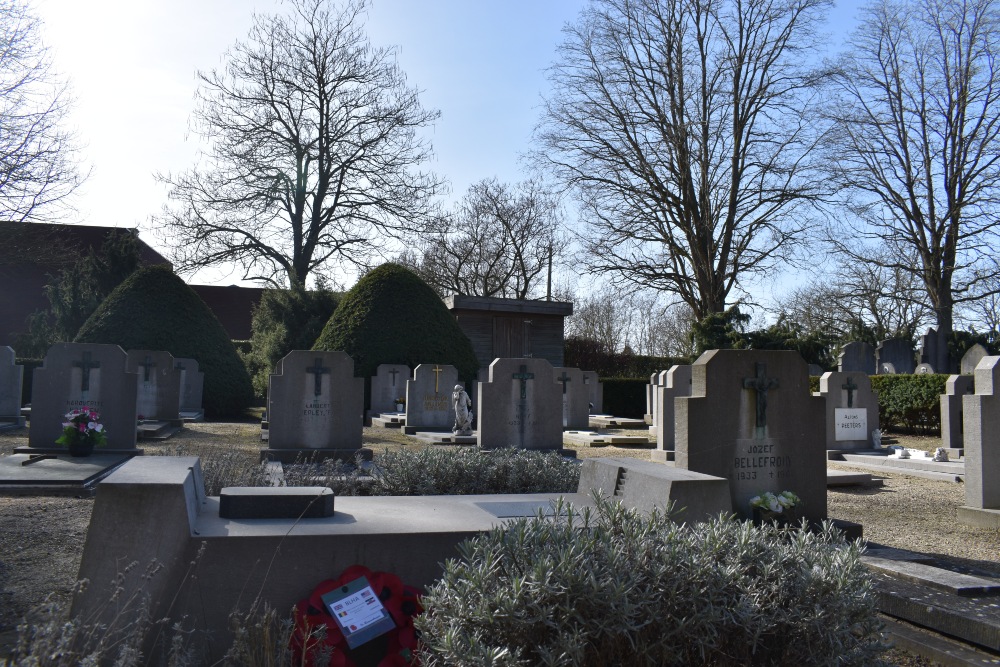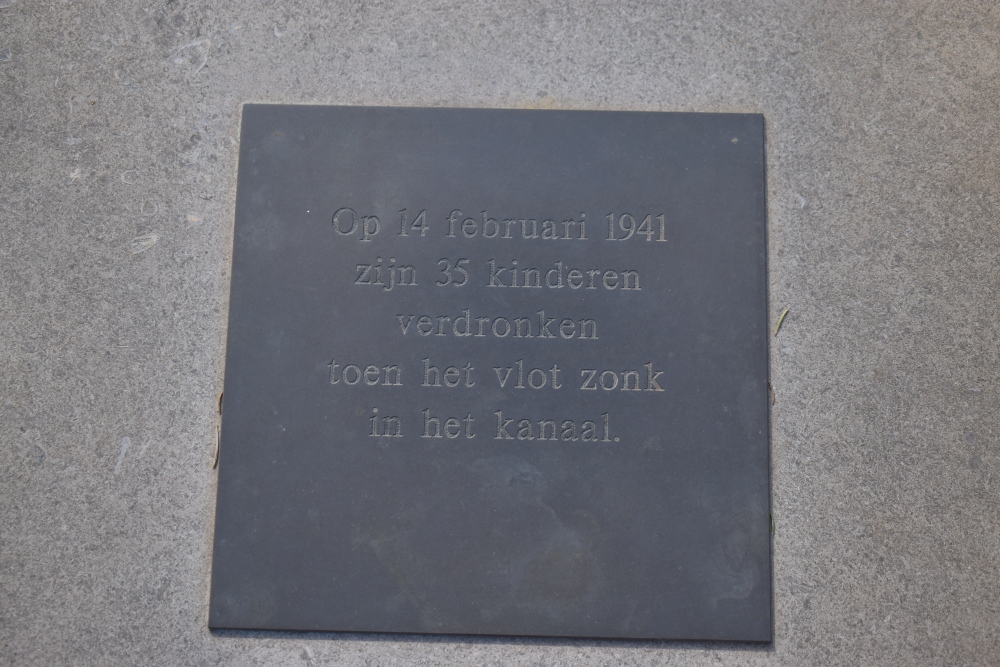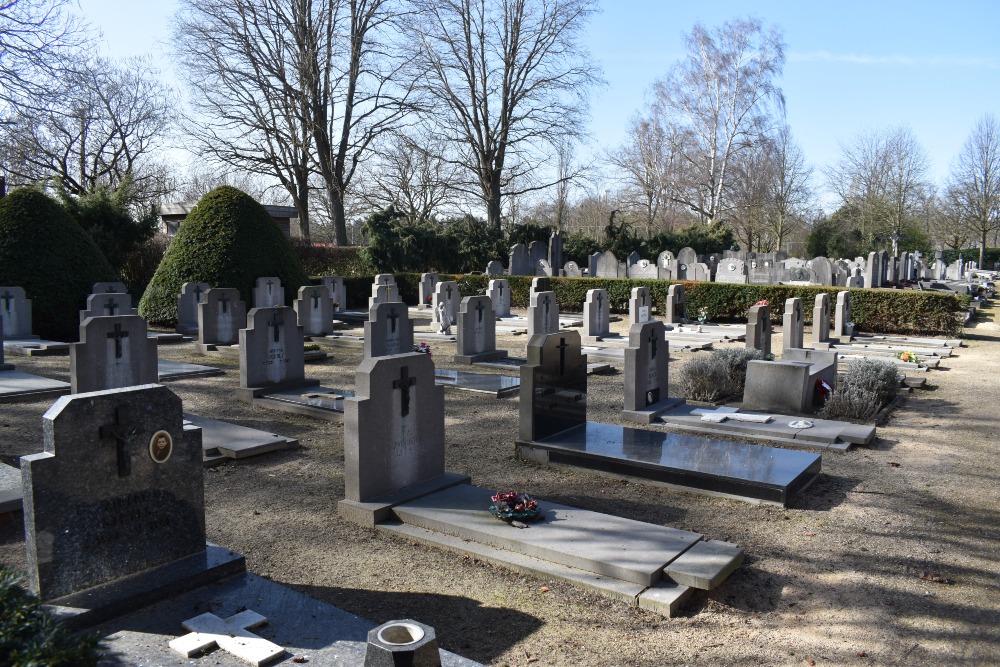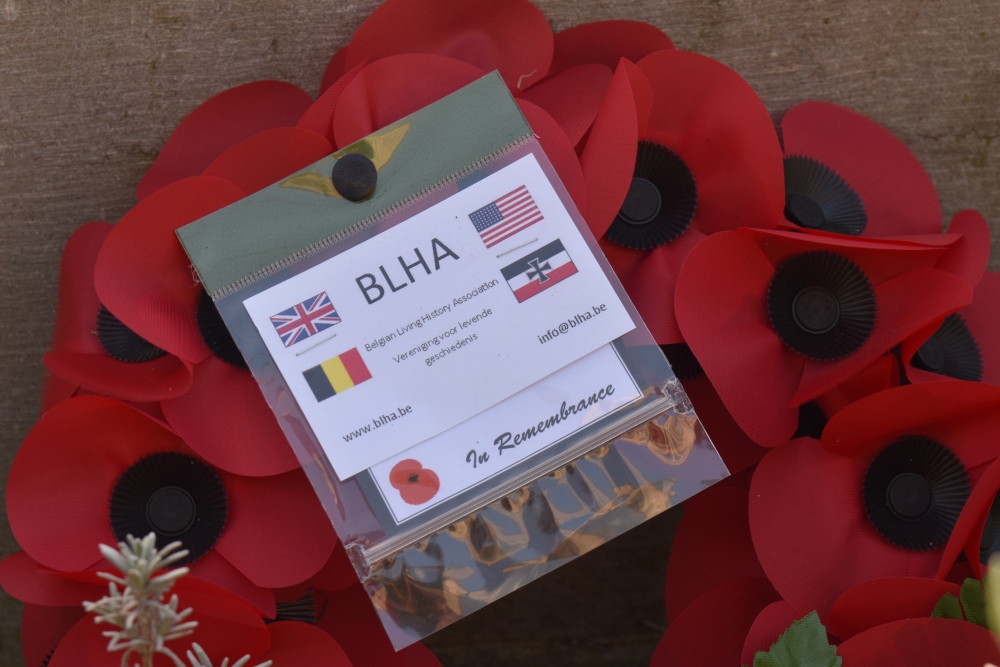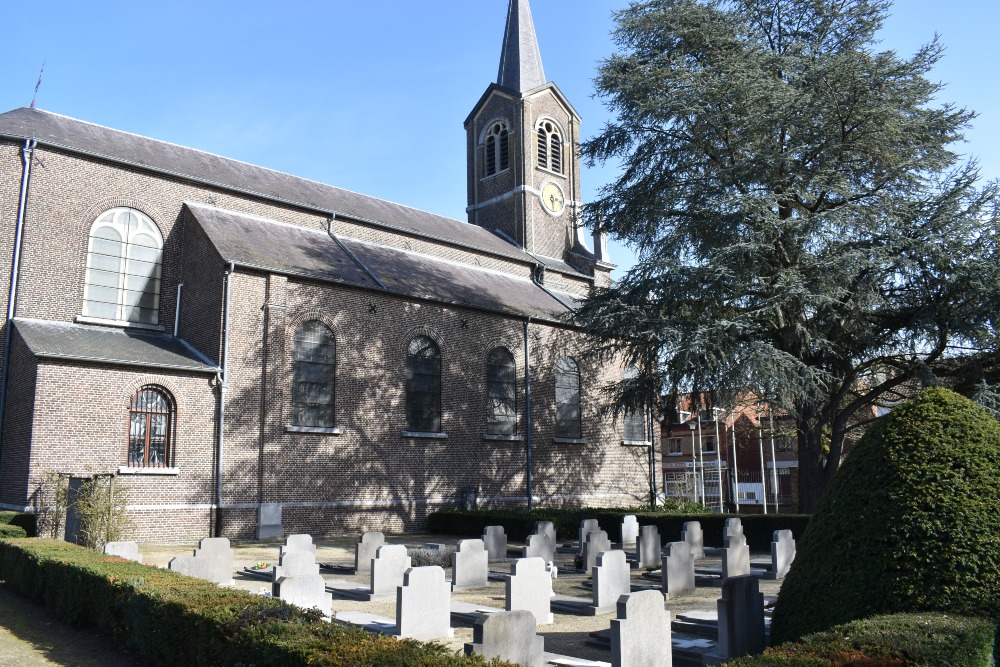Memorial to the Drowned Children
In the village cemetery in the churchyard next to the Church of the Visitation of the Blessed Virgin Mary and the war memorial is a memorial to a profound tragedy that shook the village on a cold Friday school day in February 1941.
Although the disaster did not take place as a direct result of the violence of the Second World War ,it did take place as a consequence of that conflict .Before the war there was a bridge that connected either sides of the parish over the Albert Canal. However ,around 4pm on the 10th May 1940 the bridge was blown by engineers of the Belgian army to try an impede the German advance.
Without a bridge, a raft with a wooden floor and barrels underneath measuring 3 by 4 meters was used to ferry people across the canal.A local workman from the city would pull it across the canal on a winch,while the raft had a capacity of 15 people and their usual mode of transport, their bicycle.
However,on the fateful day of Friday the 14th February 1941 around a quarter to four a second group of schoolchildren on their way home after school came to board the raft on the south bank with their teacher.That day 57 children and four adults boarded the raft! With too much weight, the raft tilted sending the children who could not swim in to a freezing canal barely a few yards from the shore.The horrific tragedy took the lives of 26 boys ,9 girls and 2 adults ,and screams could be heard over in Bokrijk.The children were aged between 7 and 14 years old and one family lost 4 offspring another 3 that dark day.Some children were saved by one particular schoolboy Henri Berx who saved them by grabbing their hair.
Survivors said that there should never have been allowed so many on the raft on one transit and with no regulations at the time the worker who operated the ferry became the "fall guy" and was convicted and jailed according to local police reports. The teacher left the area.
It was not till 52 years after the tragedy that devastated the lives of many of the local families that a memorial stone was unveiled on 23rd March 1993.However the stone memorial based on a rock left over from the nearby Japanese Garden in Hasselt was not deemed a fitting and appropriate epitaph.
On the 14th February 1999 a new memorial was unveiled that had been designed by Boniface Thomis and immediate family members of the deceased. It represents a cross section of the canal, with the steps on the southern bank cut into the stone representing where the children descended to the raft and another set of steps cut into the north bank that they could never enter afterwards.Within the cross section is an angled granite stone that depicts the raft and death of the disaster .On a copper plate is the text written by Constance Dekkens who lost four family members to the canal ,and reads" On February 14, 1941, 35 children drowned when the raft capsized into the canal".
When you see all the nearby graves of all those young souls that lie behind the memorial with the same date of death ,it brings home the trauma of the fateful day. Each year the disaster is commemorated with floral tributes.
Do you have more information about this location? Inform us!
Source
- Text: Ian Paterson
- Photos: Ian Paterson
- HASSELT TIJDENS WOII: VAN BEZETTING TOT BEVRIJDING, Frank Vanstreels
Nearby
Point of interest
- American 203mm Howitzer M1A1 Hasselt - Hasselt
- Ruins Bombed Church - Hasselt
- Bomb Craters Tommelen Area Hasselt - Hasselt
Monument
- War Memorial Godsheide - Godsheide (Hasselt)
- Memorial US 1056th Port Construction and Repair Group - Godsheide (Hasselt)
- War Memorial US 2nd Armored Division - Hasselt
Cemetery
- Belgian Graves Veterans Godsheide - Godsheide (Hasselt)
- Belgian War Graves Hasselt Old Cemetery - Hasselt
- Belgian War Graves Hasselt Communal Cemetery - Hasselt
Remembrance Stone
- Stumbling Stones Maastrichterstraat 108 - Hasselt
- Stumbling Stone de Gerlachestraat 9 - Hasselt
- Stumbling Stones Demerstraat 43-45 - Hasselt
Fortification
- Lock Bunker Hasselt (Godsheide) - Hasselt
- Diepenbeek Lock Bunker D1 - Diepenbeek
- Lock bunker BH-18 Diepenbeek - Diepenbeek
